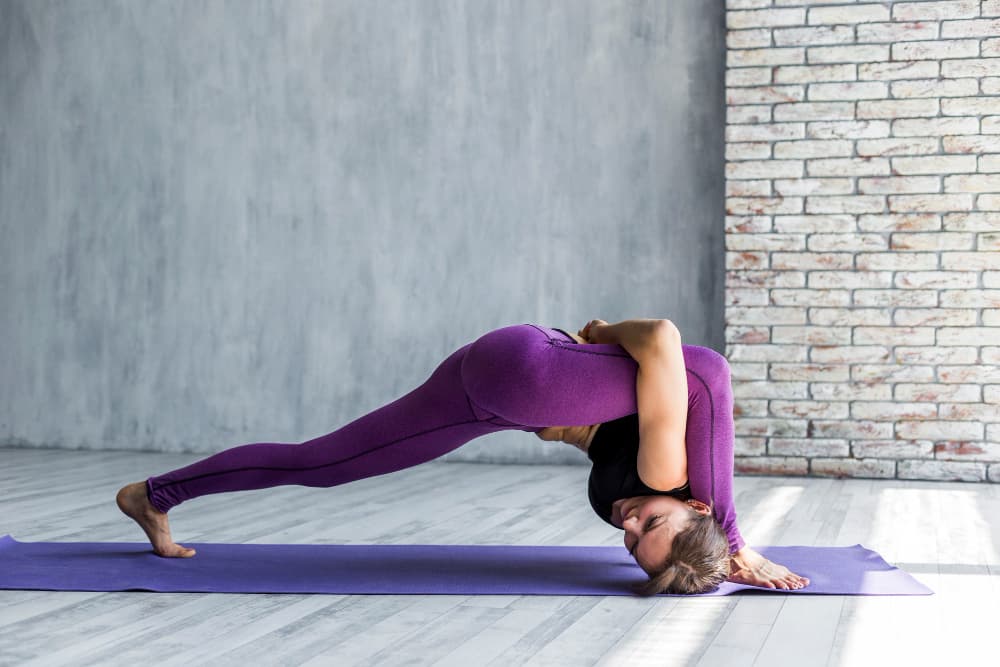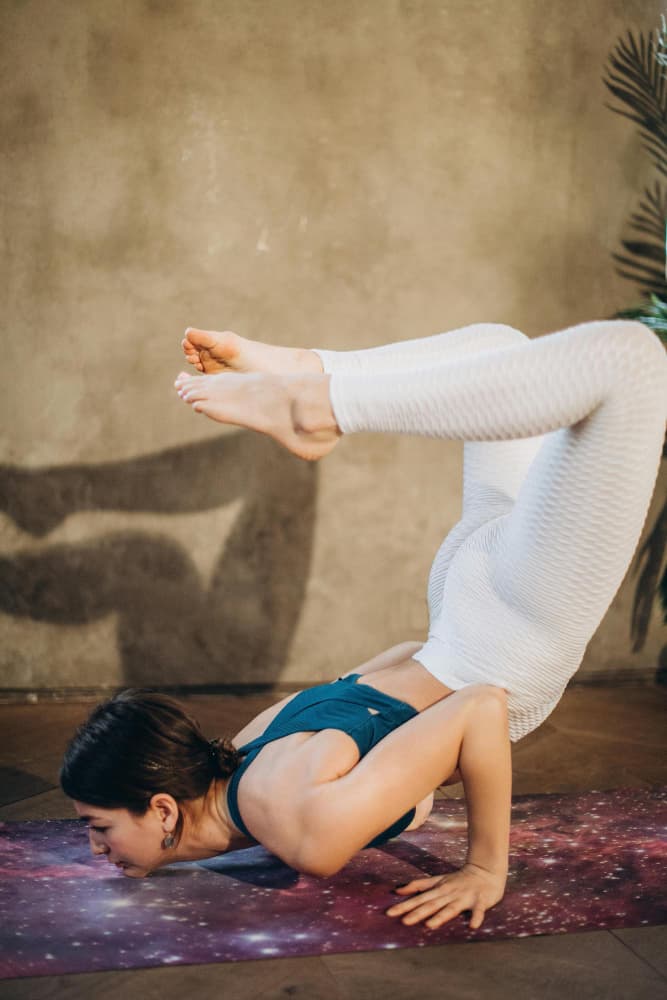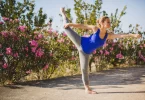Yoga, in its myriad forms, has long been revered for its ability to bring balance to the mind and body. One such form, Somatic Yoga, takes a unique approach by focusing on gentle movements and awareness to relieve chronic pain and stress. This article aims to shed light on the benefits, techniques, and routines associated with Somatic Yoga Poses, providing readers with the knowledge to integrate this practice into their daily lives.
Table of Contents
Introduction to Somatic Yoga Poses
What is Somatic Yoga?
Somatic Yoga is a mindful movement practice that emphasizes internal physical perception and awareness. Unlike traditional yoga, which often focuses on achieving certain poses, Somatic Yoga is more about the process of getting into the pose and understanding how your body feels as you move.
Explanation of Somatic
The term somatic comes from the Greek word “soma,” meaning body. It refers to practices that enhance the mind-body connection, allowing individuals to become more attuned to their internal experiences. By focusing on this awareness, Somatic Yoga helps to release muscle tension and improve overall well-being.
Key Principles of Somatic Yoga
- Awareness: Paying close attention to bodily sensations during movement.
- Gentle Movements: Using slow, deliberate movements to avoid strain and injury.
- Breath: Incorporating breathwork to facilitate relaxation and mindfulness.
- Mind-Body Connection: Strengthening the relationship between mental and physical health.
Benefits of Somatic Yoga
Somatic Yoga offers numerous benefits, both physical and mental. It’s particularly effective for those dealing with chronic pain, stress, and tension. Here’s a closer look at some of the advantages:
Physical Benefits
- Flexibility: Gentle movements help increase flexibility without putting undue stress on the body.
- Strength: Even though the movements are slow, they can help build strength over time.
- Pain Relief: Many practitioners find relief from chronic pain conditions, such as back pain and arthritis.
Mental and Emotional Benefits
- Stress Reduction: The mindful nature of Somatic Yoga helps reduce stress and anxiety.
- Mindfulness: Enhances overall mindfulness, helping you stay present in daily life.
- Emotional Balance: This can help regulate emotions and improve mental clarity.
Basic Somatic Yoga Poses
Pelvic Clock
The Pelvic Clock exercise is a fundamental Somatic Yoga pose that helps to increase pelvic awareness and mobility. It’s a great way to start your practice, especially if you experience lower back pain or stiffness.
Description and Steps
- Lie on your back with your knees bent and feet flat on the floor, hip-width apart.
- Imagine a clock face on your pelvis, with 12 o’clock at your navel and 6 o’clock at your tailbone.
- Slowly tilt your pelvis towards 12 o’clock by pressing your lower back into the floor.
- Then, tilt towards 6 o’clock by arching your lower back away from the floor.
- Continue this movement, exploring the entire clock face by moving towards 3 and 9 o’clock as well.
Benefits and Modifications
- Benefits: Improves pelvic mobility, releases tension in the lower back, and increases awareness of the core muscles.
- Modifications: If lying on your back is uncomfortable, you can perform this exercise seated on a chair.
Somatic Shoulder Release
The Somatic Shoulder Release is perfect for easing tension in the shoulders and upper back. This simple yet effective pose can be done almost anywhere and is especially helpful if you spend long hours at a desk.
Description and Steps
- Sit or stand comfortably with your spine straight and shoulders relaxed.
- Inhale and gently lift your shoulders towards your ears.
- Exhale and slowly roll your shoulders back and down.
- Repeat this movement, focusing on the sensation in your shoulders and upper back.
Benefits and Modifications
- Benefits: Relieves tension in the shoulders, improves posture, and increases range of motion.
- Modifications: If you have limited shoulder mobility, perform smaller movements and gradually increase your range.
Hip Circles
Hip Circles are a gentle way to increase hip flexibility and reduce stiffness. This pose is beneficial for anyone who sits for long periods or experiences hip tightness.
Description and Steps
- Stand with your feet hip-width apart and hands on your hips.
- Slowly circle your hips to the right, making a large, smooth circle.
- Complete several circles, then reverse direction.
- Focus on making the movement as smooth and controlled as possible.
Benefits and Modifications
- Benefits: Increases hip flexibility, improves circulation, and releases tension in the lower back and hips.
- Modifications: If standing is uncomfortable, you can perform hip circles seated on a chair.
Somatic Leg Lifts
Somatic Leg Lifts are a gentle exercise that helps strengthen the core and improve coordination. This pose is particularly beneficial for those with lower back pain or stiffness.
Description and Steps
- Lie on your back with your knees bent and feet flat on the floor.
- Slowly lift one leg, keeping the knee bent, and bring it towards your chest.
- Lower the leg back to the starting position and repeat with the other leg.
- Perform the movements slowly and mindfully, paying attention to how your back feels.
Benefits and Modifications
- Benefits: Strengthens the core, improves coordination, and relieves lower back tension.
- Modifications: If lifting the leg fully is difficult, you can slide your foot along the floor instead.
Related Article: 30-Minute Somatic Yoga: Hip Opening Flow for Flexibility & Relief
Intermediate Somatic Yoga Poses
Hip Circles
Hip Circles are a great way to increase hip flexibility and release tension. This pose helps improve circulation and mobility in the hips, making it a valuable addition to your yoga routine.
Description and Steps
- Begin by standing with your feet hip-width apart.
- Place your hands on your hips for support.
- Slowly start to circle your hips to the right, making a wide, smooth circle.
- After several circles, switch directions and circle your hips to the left.
- Focus on the sensation in your hips and lower back, moving mindfully.
Benefits and Modifications
- Benefits: Enhances hip flexibility, promotes better circulation, and alleviates lower back tension.
- Modifications: Perform smaller circles if you feel any discomfort or if you have limited hip mobility.
Somatic Leg Lifts
Somatic Leg Lifts are designed to strengthen the core and improve coordination. This exercise is particularly beneficial for those experiencing lower back pain or stiffness.
Description and Steps
- Lie on your back with your knees bent and feet flat on the floor.
- Slowly lift one leg, keeping the knee bent, and bring it towards your chest.
- Lower the leg back to the starting position and repeat with the other leg.
- Focus on maintaining a slow and controlled movement, paying attention to how your back feels.
Benefits and Modifications
- Benefits: Strengthens the core, improves coordination, and helps relieve lower back tension.
- Modifications: Slide your foot along the floor if lifting the leg fully is difficult.
Back Arch and Curl
The Back Arch and Curl pose helps to improve spinal flexibility and relieve tension in the back. It’s a bit more challenging than basic poses, making it ideal for intermediate practitioners.
Description and Steps
- Start on your hands and knees in a tabletop position.
- Inhale as you arch your back, lifting your head and tailbone towards the ceiling (Arch).
- Exhale as you round your back, tucking your chin to your chest and drawing your belly button towards your spine (Curl).
- Move slowly and mindfully, synchronizing your breath with your movements.
Benefits and Modifications
- Benefits: Improves spinal flexibility, releases tension in the back, and promotes better posture.
- Modifications: If you experience wrist discomfort, perform the pose on your forearms.

Advanced Somatic Yoga Poses
Somatic Sun Salutations
Somatic Sun Salutations are a mindful variation of the traditional sequence, focusing on gentle, slow movements to deepen the connection between body and breath.
Description and Steps
- Mountain Pose: Begin standing with feet together and arms by your sides. Take a deep breath in and feel grounded.
- Forward Fold: Exhale and hinge at your hips, folding forward while keeping your knees slightly bent.
- Halfway Lift: Inhale, lift your torso halfway, bringing your hands to your shins, and lengthen your spine.
- Plank: Exhale, step back into a plank position, engaging your core.
- Cobra: Lower yourself down and inhale as you lift your chest into a gentle backbend.
- Downward Dog: Exhale and lift your hips, coming into a downward-facing dog. Hold for a few breaths.
- Forward Fold: Step forward to your hands, exhale, and fold again.
- Mountain Pose: Inhale, rise up to standing, and exhale, return to mountain pose.
Benefits and Modifications
- Benefits: Improves flexibility, strengthens muscles, and enhances body awareness.
- Modifications: Move slower and use props like blocks if needed.
Somatic Warrior Poses
The Somatic Warrior Poses incorporate mindful adjustments and awareness of the traditional warrior sequence, providing a deeper stretch and engagement.
Description and Steps
- Warrior I: Start in a lunge position, with the front knee bent and the back leg straight. Inhale, lift your arms overhead.
- Warrior II: Exhale, open your hips and shoulders to the side, and hold your arms parallel to the floor.
- Reverse Warrior: Inhale, reach your front arm up and back, gently stretching your side.
- Transition: Flow smoothly between each pose, focusing on alignment and breath.
Benefits and Modifications
- Benefits: Builds strength, improves balance, and increases flexibility.
- Modifications: Use a chair or wall for support if balance is an issue.
Somatic Flow Sequence
The Somatic Flow Sequence is an advanced series of movements that integrates various poses into a continuous, flowing practice, emphasizing fluidity and mindfulness.
Description and Steps
- Starting Pose: Begin in a comfortable seated position, grounding yourself with a few deep breaths.
- Flow Movement: Transition through poses such as cat-cow, downward dog, and standing poses with smooth, controlled movements.
- Ending Pose: Conclude with a seated meditation or relaxation pose, focusing on breath and body awareness.
Benefits and Modifications
- Benefits: Enhances overall body coordination, improves flexibility, and fosters a deep sense of relaxation.
- Modifications: Adjust the speed and intensity of the flow to suit your comfort level.
Integrating Somatic Yoga into Your Practice
Creating a Somatic Yoga Routine
Integrating Somatic Yoga into your daily routine can bring a sense of balance and awareness to your life. Whether you’re a beginner or an advanced practitioner, a consistent routine is key to reaping the full benefits of this practice.
Tips for Beginners
- Start Slow: Begin with basic poses and gradually introduce intermediate and advanced poses as you become more comfortable.
- Listen to Your Body: Pay close attention to how your body feels during each pose. If something doesn’t feel right, modify the pose or take a break.
- Set a Schedule: Dedicate specific times for your practice, whether it’s daily or a few times a week. Consistency is more important than duration.
- Use Props: Don’t hesitate to use yoga blocks, straps, or blankets to support your practice. These tools can help make poses more accessible and comfortable.
Structuring Your Practice
- Warm-Up: Begin with gentle stretches to prepare your body. Simple poses like Cat-Cow and Pelvic Clock can help loosen up your muscles.
- Main Sequence: Incorporate a mix of basic, intermediate, and advanced poses tailored to your level. Aim to balance poses that target different areas of the body.
- Cool Down: End with relaxing poses such as Child’s Pose or a seated meditation to help your body and mind transition out of the practice.
- Mindfulness: Throughout your practice, focus on your breath and bodily sensations. This mindfulness approach enhances the benefits of Somatic Yoga.
Combining Somatic Yoga with Other Practices
Combining Somatic Yoga with other forms of exercise or mindfulness practices can provide a well-rounded approach to wellness.
Integration with Traditional Yoga
- Complementary Practices: Somatic Yoga can be a gentle complement to more vigorous traditional yoga styles like Vinyasa or Ashtanga. Start or end your sessions with Somatic Yoga to enhance flexibility and awareness.
- Balanced Routine: Integrating Somatic Yoga into your existing yoga practice can help balance the intensity, offering periods of calm and reflection.
Benefits of Combining Practices
- Holistic Approach: Combining different practices can address various aspects of physical and mental health, leading to a more holistic approach to wellness.
- Increased Awareness: The mindful nature of Somatic Yoga can enhance your awareness in other activities, from traditional yoga to everyday movements.
- Flexibility and Strength: While traditional yoga builds strength and flexibility, Somatic Yoga focuses on releasing tension and improving body awareness, creating a balanced routine.
Related Article: Discover Somatic Yoga for Beginners – Start Today!
FAQs about Somatic Yoga Poses
What is the difference between Somatic Yoga and traditional yoga?
Somatic Yoga focuses on gentle, mindful movements that emphasize internal awareness and the mind-body connection. Unlike traditional yoga, which often aims to achieve specific poses, Somatic Yoga is about how you move into and feel during each pose. It prioritizes the process over the end result, making it accessible for people of all fitness levels.
Can beginners practice Somatic Yoga?
Absolutely! Somatic Yoga is particularly well-suited for beginners because it emphasizes slow, controlled movements and listening to your body. Starting with basic poses like Cat-Cow and Pelvic Clock can help newcomers build a strong foundation without the risk of injury.
How often should I practice Somatic Yoga?
The frequency of your practice can vary based on your individual needs and schedule. However, practicing Somatic Yoga two to three times a week can be beneficial for most people. Consistency is key, so even short daily sessions can lead to significant improvements in flexibility and stress reduction.
Are there any risks or precautions to consider?
Somatic Yoga is generally safe for most people, but it’s important to listen to your body and avoid pushing yourself too hard. If you have any chronic conditions or recent injuries, consult with a healthcare professional before starting a new yoga practice. Using props and modifying poses can also help you practice safely.
How does Somatic Yoga help with chronic pain?
Somatic Yoga can be highly effective for managing chronic pain. The gentle, mindful movements help release muscle tension, improve mobility, and enhance body awareness. By focusing on how your body feels and moves, you can identify and address areas of pain or discomfort, leading to long-term relief.
Can Somatic Yoga improve mental health?
Yes, Somatic Yoga has numerous mental health benefits. The practice encourages mindfulness, which can reduce stress and anxiety. By promoting a deeper connection between the mind and body, Somatic Yoga helps improve emotional balance and mental clarity. It’s an excellent tool for managing the stresses of daily life.
Conclusion
Somatic Yoga is a gentle yet powerful practice that focuses on the mind-body connection. By incorporating mindful movements and deep awareness into your routine, you can experience numerous physical and mental benefits. Whether you’re a beginner or an advanced practitioner, the poses and techniques of Somatic Yoga can help you improve flexibility, reduce stress, and manage chronic pain.
Starting with basic poses like Cat-Cow and Pelvic Clock, progressing to intermediate movements such as Hip Circles and Somatic Leg Lifts, and eventually integrating advanced sequences like Somatic Sun Salutations, you can tailor your practice to suit your needs and abilities. The key is to listen to your body and move mindfully, ensuring that each pose feels comfortable and beneficial.







